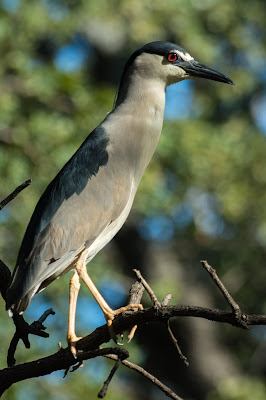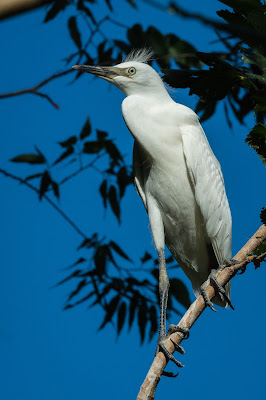Zak has a friend visiting from Colorado who wanted to go out somewhere to take pictures yesterday. I considered several options before deciding on the one place where I knew the potential subjects would be plentiful, cooperative, and striking: the UT Southwestern Rookery.
I've always struggled getting Black-crowned Night-Herons in good light here. This one had practically found itself a spotlight the way the sun was coming through the trees.
I told Zak's friend that when it comes to wildlife photography, you need to have the eye in focus in order to have any chance at a great picture. This juvenile Black-crowned Night-Heron gave us a chance to test that theory.
Great Egrets are the great constant at the rookery. I can always count on them to have a presence.
I had to do a bit of research to figure out the species of this adolescent. Cattle Egret wasn't what immediately came to mind, but that's apparently what it is.
I saw a greater variety of young birds on this visit to the rookery -- including this Great Egret chick -- than any other I'd made. I think this was also the latest visit I'd made. Assuming correlation implies cause, I guess going later means all the various residents have had time to build nests, mate, and have their eggs hatch.
This was another species I couldn't immediately recognize. I was a little surprised to identify it as a young Tricolored Heron! I didn't see the parents, nor have I ever seen an adult here.
Adult Cattle Egrets proved as challenging for me as always, but I did find one willing to fluff out its breeding plumage and not completely obscured by branches.
Our visit ended as it began -- with an accommodating Black-crowned Night-Heron posing in good light. In between we talked about composition, preparation, how technique trumps equipment, and more. I'm not sure who was more delighted about the several good shots he ended up taking -- him, or me!
Related Links:








No comments:
Post a Comment